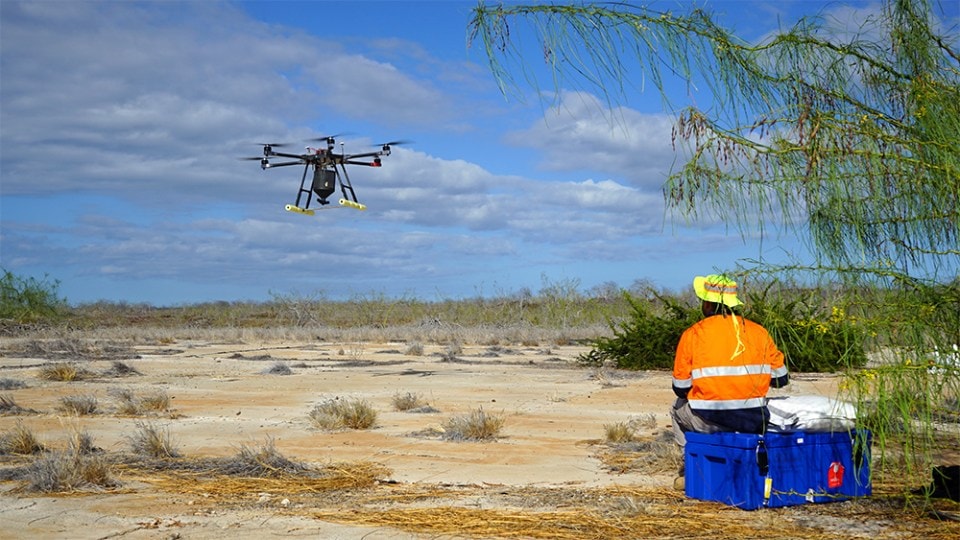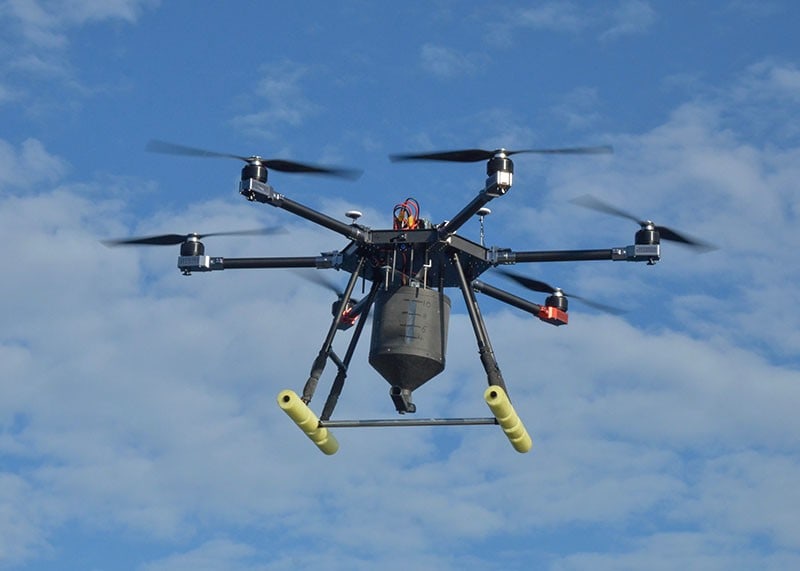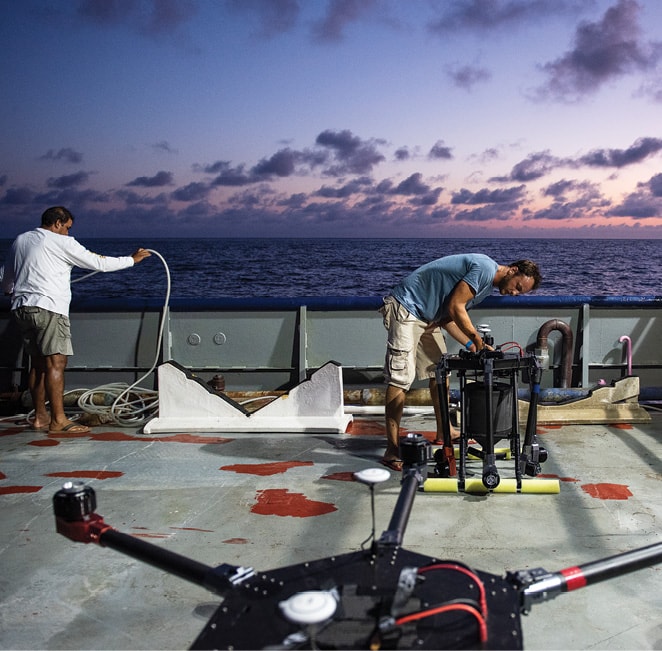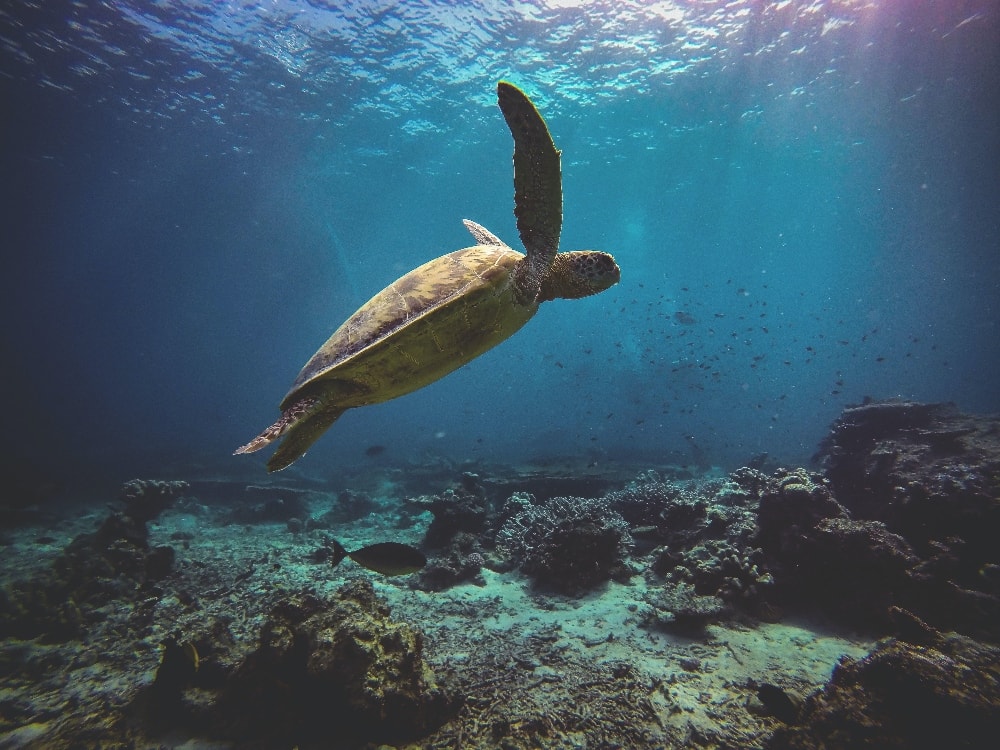Drones to Help with Rampant Rat Problem on Remote Pacific Islands
BY Zacc Dukowitz
21 July 2021Invasive rats have completely taken over several remote islands in the Pacific, decimating indigenous wildlife—including endangered sea turtles—and generally wreaking havoc on the islands’ ecosystems.
An environmental group called Island Conservation has already used drones to deal with rat invasions in the Galápagos, flying them over rat-infested areas and dropping poisoned pellets targeted at killing the rats.
The approach was incredibly successful, resulting in an eradication of 100% of the invasive rat population. And now Island Conservation plans to do the same thing in the Pacific.

Photo credit: Island Conservation
Since its founding in 1994, Island Conservation has successfully restored 65 islands worldwide, benefiting 1,218 populations of 504 species and subspecies.
This work is crucial for the overall health of the planet, not just for the individual islands being restored.
According to Island Conservation, although islands make up only 5% of the planet’s land mass, they house about 20% of all plant, reptile, and bird species. Further, 75% of amphibian, bird, and mammal extinctions happen on islands—with invasive rats being the primary cause.
But now, with the help of drones, Island Conservation is working to reverse that trend.
How Rat Invasions Can Kill an Island
There are two different kinds of rats found on the small Polynesian island of Tetiaroa—the Polynesian rat and the black rat.
Researchers believe the Polynesian rat was first introduced to the atoll 1,000 years ago by the Polynesian islanders who first traveled to the area and inhabited it. But the black rat was introduced just about fifty years ago, in the 1970s.
Since then, both types of rats have completely taken over. Recent data suggests that there might be as many as 65,000 rats on the 3.5-mile square island.
As the rats have taken over, they’ve steadily killed off other animals native to the island, including birds and sea turtles. The death of these animals has a residual effect on the entire ecosystem, since they bring extra nutrients onto the island which is in turn washed back out to the surrounding reefs and marine ecosystem.
To put it simply, when the rats start to dominate, the whole island starts to die.
There’s emerging research on the benefits to marine ecosystems and coral reefs from removing invasive rodents. It’s a holistic ecosystem-wide approach.
– David Will, Innovation Program Manager at Island Conservation
A Drone-Based Solution to Island Rat Invasions
In order to successfully fight an island rat invasion all of the rats on the island must be killed.
Even one remaining rat can repopulate an entire island in a short period of time—a single pregnant rat can overrun an island the size of Tetiaroa with its offspring in just two years.
Previous efforts to eradicate rats on Tetiaroa involved people walking the island, spreading poison pellets by hand. In 2012, a team of 35 volunteers used this approach to spread poison pellets over a period of four months.
The effort ultimately failed. Despite all their hard work a few rats remained, and the island was soon swarming with them again.
Helicopters can be used to spread poisoned bait, but this approach is not only expensive but also potentially much more invasive for the other animals living on the island.
Drones present a quicker and more efficient solution for spreading poison pellets.
On Tetiaroa, Island Conservation plans to use drones to drop 30 tons of poison pellets onto one island in just two weeks, working with a crew of only five to six people.
That is a time reduction of 88% and a staff reduction of 82% when compared to the effort in 2012, not to mention the cost savings from the reduction of time and personnel.
The drone used for these efforts was designed and made by New Zealand-based Envico Technologies specifically for these efforts.
The hexacopter comes equipped with a hopper and an applicator created by a 3D printer, and measures 9 feet by 9 feet.

Envico Technologies’ drone for dropping poisoned pellets
While the drones used in the Galápagos could only carry 26.5 pounds, the new ones that will be used in Tetiaroa can carry an impressive 110 pounds. These new drones will be powered by gas engines for the first time, helping extend their flight time to a full hour.
Island Conservation’s Success with Drones in the Galápagos
Using a drone to spread poison pellets is not only quicker and cheaper—it’s also more effective, because it allows you to drop more pellets at once, and return for additional missions as needed.
Island Conservation’s success in the Galápagos showcases how effective drones are for this kind of work.
In 2019, the swallow-tailed gull—which is the only nocturnal gull in the world—was at risk of complete extinction due to invasive rats on the island of Seymour Norte in the Galápagos.
Island Conservation moved quickly, deploying drones for the first time ever in invasive rat eradication. Ultimately it was able to achieve 100% eradication of the rats on an island, and save the endangered gull.
Drones were deployed from boats floating offshore and flown autonomously along predetermined routes, dropping rodenticide in precise locations chosen to minimize the impact on other wildlife.

Island Conservation personnel prepare to launch drones from a boat in the Galápagos
After the Galápagos, Island Conservation chose the island of Tetiaroa for rat eradication because it had both the most endangered species and the most invasive species in the world.
Island Conservation has big ambitions to spread its rat eradication efforts, helping restore the health of other islands around the globe.
Generally, the larger the island the more biodiversity it has, so scaling [this approach] up to those larger islands will have the largest impact on ecosystems. We have a pipeline of projects. Over the next five years we expect drones can reduce costs by $4 million and we can restore ten more islands with those funds and benefit twice as many species populations.
– David Will, Innovation Program Manager at Island Conservation



